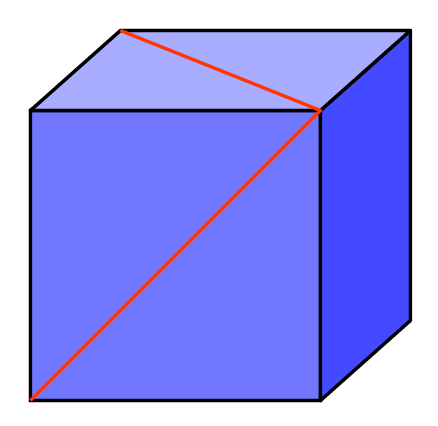Diagonals on the Face of a Cube. What’s the Angle?
It might be that if you are in a particularly mathematical frame of mind you are trying to use a three dimensional co-ordinate system and a matrix transform to project the 45° angles in the corners in to a different plane. By all means. But it’s not necessary, essentially this is a 2D problem, it’s just about finding the right two dimensions to work in. Let’s add another line to the diagram and see how we go.
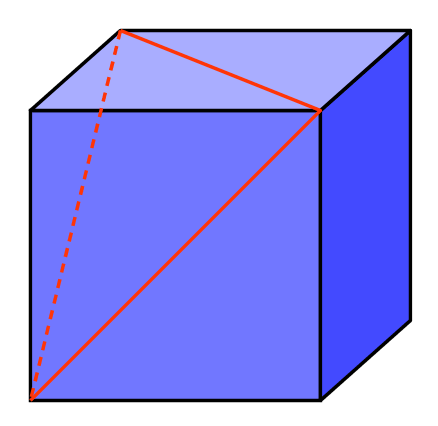
Any clearer? The dotted line completes a triangle. What’s more since all it’s edges are made up of diagonals from the squares, they are all the same length, it is an equilateral triangle. Like all equilateral triangles it’s internal angles are each 60°
A problem I have found with these 3D nets is not everyone sees them the same, it’s like an optical illusion. So at some point over the next few images it should become clear what I’m driving at…
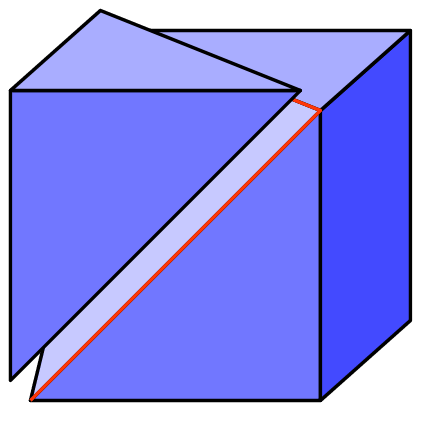
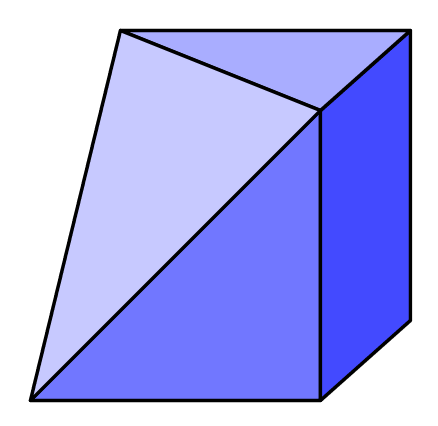
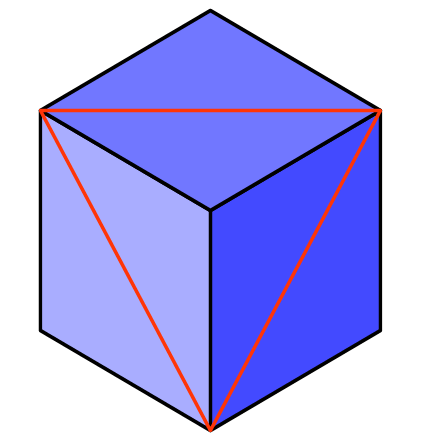
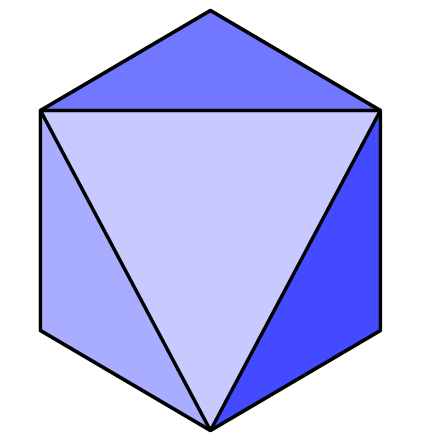
And finally, just because we can.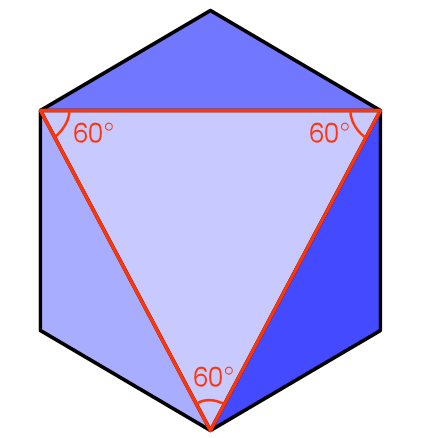
Vector Maths
As I’ve said before it’s my intention that anyone using this site does not need formal maths training. But where there is an obvious maths solution I will try to include it.
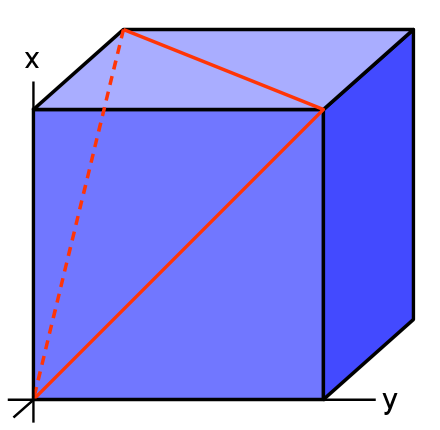
The above diagram shows a standard right handed co-ordinate system with the label on the z axis hidden. We will calculate the angle of the two red lines that meet at the origin. The first being defined as (1,1,0) and the second (1,0,1)
The angle between to vectors is given by:
cos θ = (u•v) / (|u||v|)
cos θ = (1•1 + 1•0 + 0•1) / (√2√2)
cos θ = 1/2
⇒ θ = π/3 or 60°
Your Answer
More puzzles to try-

Maths Puzzle, can you Solve it?
2+3=8, 3+7=27, 4+5=32, 5+8=60, 6+7=72, 7+8=?? Solve it?Read More »
Friends coming over to you for water puzzle
You have a large number of friends coming over and they all get thirsty. Your first friend asks for 1/2 ...Read More »
Hot Cup of coffee and cream riddle
You are served a hot cup of coffee and room-temperature cream at a restaurant. You want to wait a few ...Read More »
The Farmhouse Problem
John Farmer woke up one morning to pandemonium in his barnyard. The gate had been left open and the animals ...Read More »
Pink Riddle
In a one story house, everything is pink, the dog is pink, the cat is pink, the walls are pink, ...Read More »
Next Number in the Series Puzzle
Next Number in the Series, 5, 16, 49, 104, ?Read More »
Fill the Tank
Which tank will fill first?Read More »
Clock Hands Together
How many times in a given day, minutes, and hour clock comes in a straight line?Read More »
How many “red” words are in the sentence below?
First of all, I would redefine the concept of thegreen synthesis, because I don’t want to reducethis to an obvious ...Read More »
Programming logic puzzle
What will be the output of the following program?Read More »
Read and Answer
What is the word or phrase below? R | E | A | DRead More »
Seven Letter Word
I am a seven-letter word but if you remove four of my letters I will have one left. What word ...Read More »
Can you replace the question mark with the correct number ?
Can you replace the question mark with the correct number ? Read More »
Can you find out the letters and the word ?
You can find some missing letters in the picture. By placing two particular letters in the spaces, you can from ...Read More »
Do you see the native american wearing a headdress, or the inuit wearing a fluffy coat and entering an igloo?
Do you see the native american wearing a headdress, or the inuit wearing a fluffy coat and entering an igloo?Read More »
Twins Story
Two boys were admitted to a school. When the headmaster asks them about their parents, they tell him that they ...Read More »
Genie with c hats
A bunch of men are on an island, A genie comes down and gathers everyone together and places a magical ...Read More »
Sandrew’s birthday chocolate distribution puzzle
Today is Sandrew’s birthday for which he is distributing chocolates. There are 100 chocolates in his chocolate box. The box ...Read More »
Underground wire correction optimization Puzzle
A 120 wire cable has been laid firmly underground between two telephone exchanges located 10 km apart. Unfortunately after the ...Read More »
Determining the number of one hat
N people team up and decide on a strategy for playing this game. Then they walk into a room. On ...Read More »

